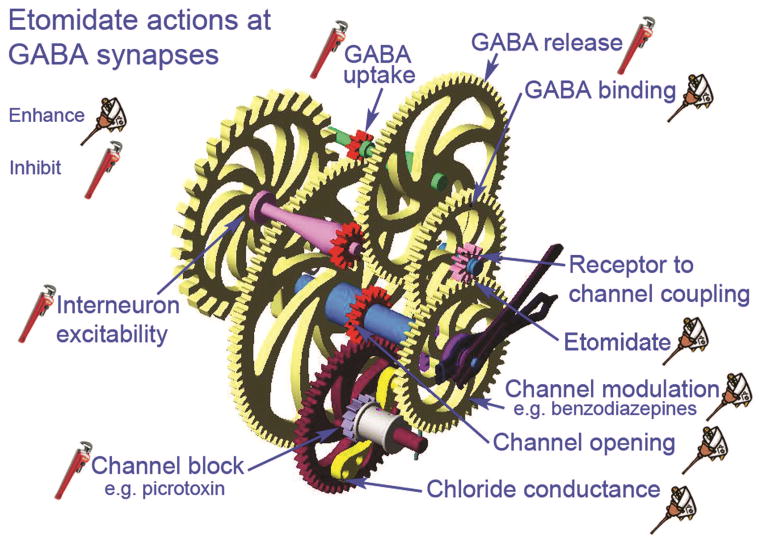Figure 2.
Etomidate acts at several sites to enhance γ-aminobutyric acid type A receptor (GABAaR) synapse function, resulting in stronger neuronal inhibition. A GABAaR synapse is represented as a stylized set of gears, all of which work together to inhibit postsynaptic neurons. Etomidate acts at some sites to enhance function (represented by an oil can) or to inhibit function (represented by a monkey wrench). By inhibiting interneuron excitability and GABA release, etomidate has a self-limiting effect on GABAaR synapses, because less GABA is available to bind with receptors. However, etomidate also blocks uptake of GABA, so any GABA that is released can act longer and stronger; etomidate also enhances GABA binding by increasing receptor affinity for its agonist. Several additional actions combine to enhance inhibition at GABAaR synapses. Etomidate enhances the ability of other channel modulators to increase chloride flux, such as the benzodiazepines and steroids. In addition, both channel opening and channel conductance can be increased by etomidate, whereas the efficacy of channel blockers is reduced. The net effect produced by etomidate is a 2- to 4-fold increase of inhibition at GABAaR synapses.

